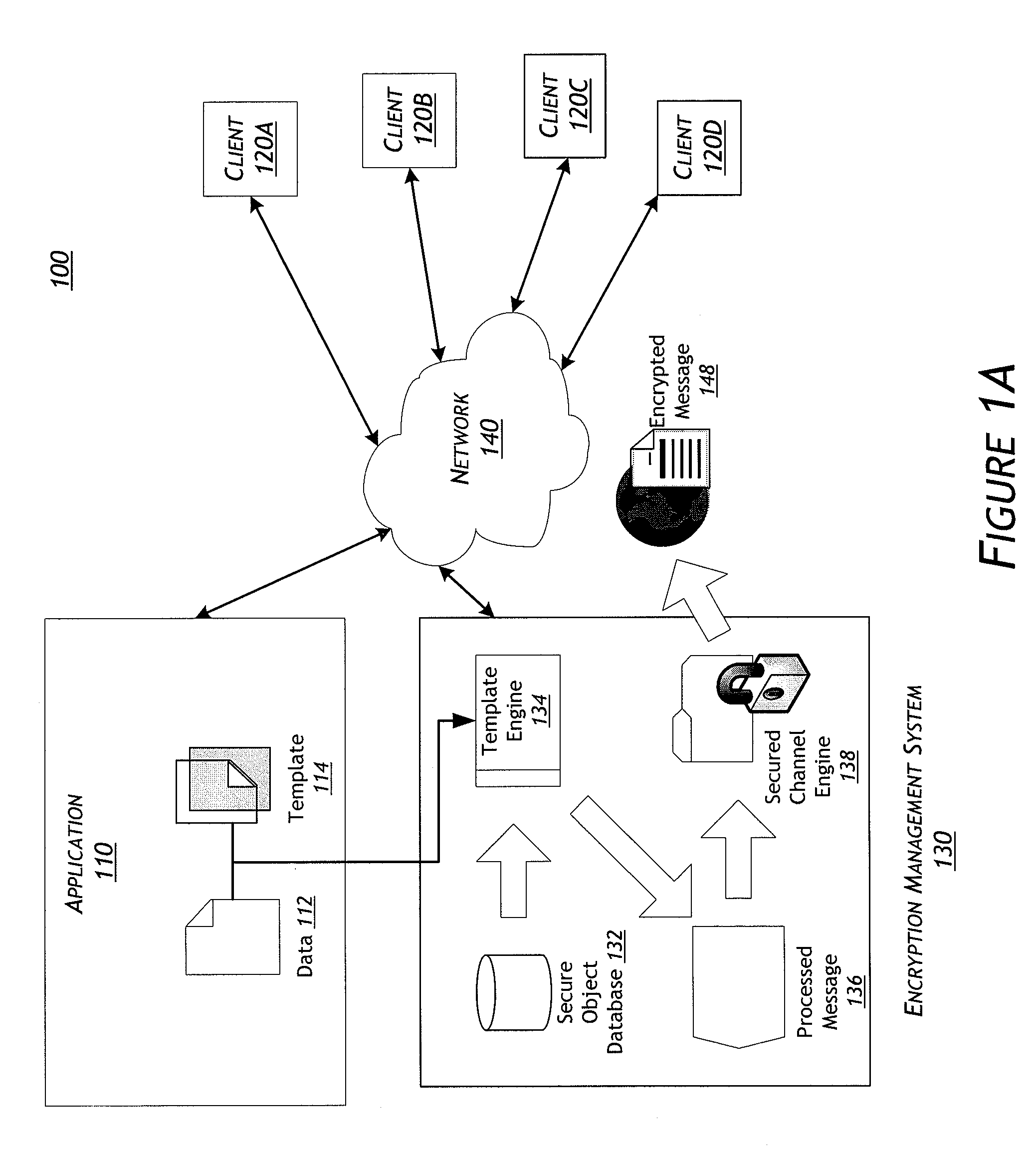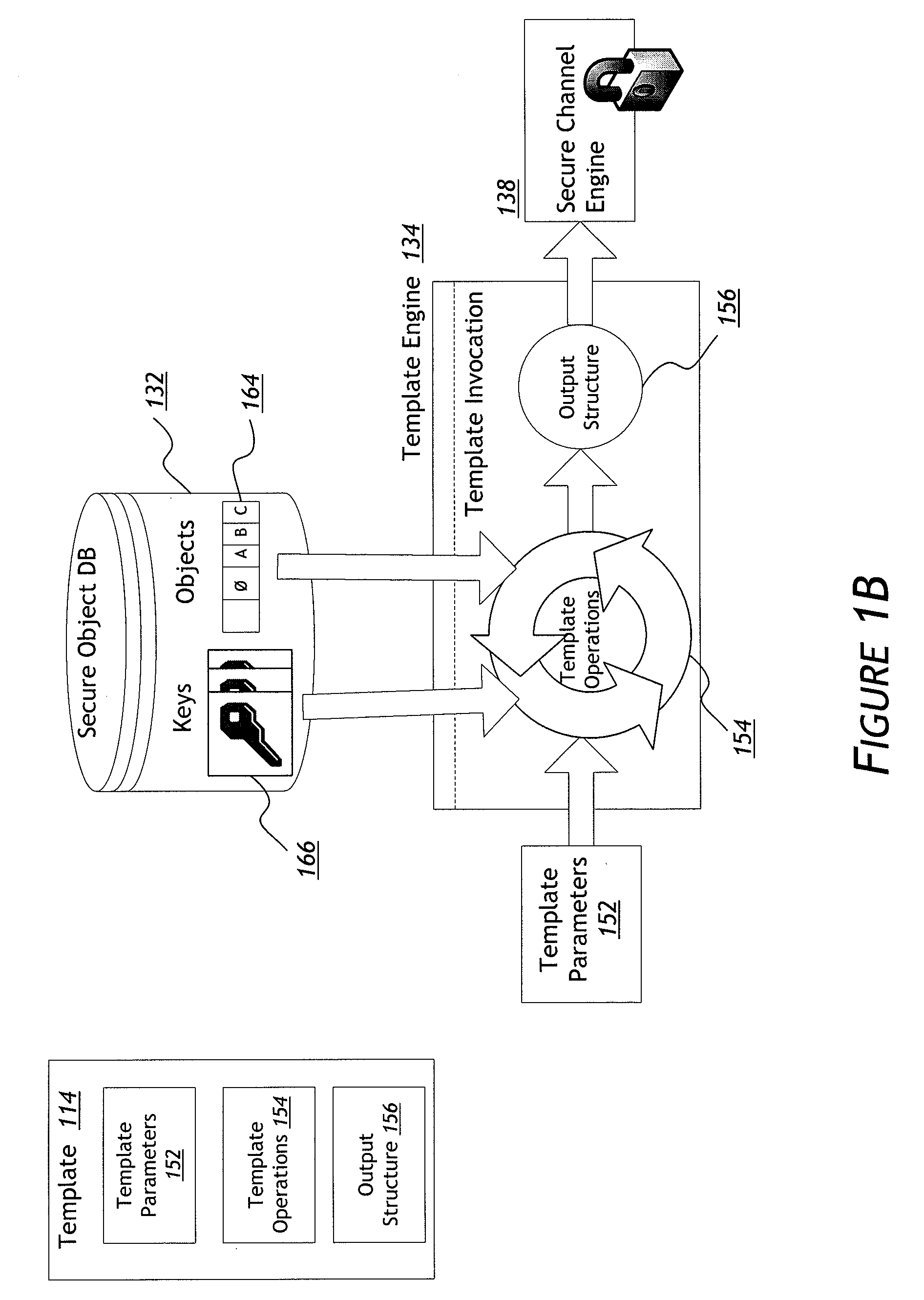Systems and methods for a template-based encryption management system
a management system and template technology, applied in the field of encryption management systems, can solve the problems of inability to easily update inability to customize and access the required encryption functionality, and inability to use standard packages in the wrong way, so as to reduce implementation times and costs, the effect of easy access and updating
- Summary
- Abstract
- Description
- Claims
- Application Information
AI Technical Summary
Benefits of technology
Problems solved by technology
Method used
Image
Examples
example # 3 ″
Example #3″
[0142]
keyData=“#param1” decryptionKeyID=“#App_AES_Enc_Key” decryptionAlgoID=“AES” storage=“temp”> ...
[0143]7.2. GenerateKey
[0144]Generate key will generate a secret key data structure according to the key type specified and return a object ID handle to it to allow it to be used in other template functions.
[0145]If the storage parameter specifies permanent storage, then the key will be stored in the encryption server database along with the optional parameters for future retrieval.
[0146]Parameters:[0147]outputKeyID—An output value of type Object ID. A handle to the generated key to be used as input to other functions. This attribute is specified as an internal variable.[0148]genKeyAlgo—Specifies the key algorithm to determine what type of key to generate. This attribute is of type string.[0149]genKeyAttributes—This is an element that specifies attributes to use in the key generation algorithm. The format of the data is an attribute template specific to the key generati...
example # 1
Example #1
[0189]
encryptionKeyID=”#ENC_KEY” plaintextData=”#PLAINTEXT” encryptionIV=”#ENC_IV” encryptionAlgo=”AESCBC” / >
example # 2
Example #2
[0190]
encryptionKeyID=”#ENC_KEY” plaintextData=”0xA1B2C3D4E5F6” encryptionAlgo=”AESECB” / >
[0191]7.7. ConcatenateData
[0192]The concatenate function is used to combine data from multiple sources: external parameters, internal function results, and string literals. The output of the concatenate function can either be an internal variable for use in another template function or the template output variable specifying the result of the template transform procedure.
[0193]Parameters:[0194] / Concatenate / @result—The result attribute is specified as an internal variable. Alternatively, it is the template output parameter.[0195] / Concatenate / bitstring—There may be one or more elements specified within the element. The value of a can be specified in two ways, either through the value of the element or through a content attribute.[0196]Content via value—The content can be specified in the value of the element. The binary data in the element is encoded as a base64 text.[0197]Content v...
PUM
 Login to View More
Login to View More Abstract
Description
Claims
Application Information
 Login to View More
Login to View More - R&D
- Intellectual Property
- Life Sciences
- Materials
- Tech Scout
- Unparalleled Data Quality
- Higher Quality Content
- 60% Fewer Hallucinations
Browse by: Latest US Patents, China's latest patents, Technical Efficacy Thesaurus, Application Domain, Technology Topic, Popular Technical Reports.
© 2025 PatSnap. All rights reserved.Legal|Privacy policy|Modern Slavery Act Transparency Statement|Sitemap|About US| Contact US: help@patsnap.com



